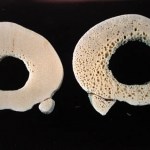dehydration
Thank you Dr. Barb Goodman (Director of SD Biomedical Research Infrastructure Network, Fellow of the American Physiological Society, Sanford School of Medicine of the University of South Dakota) who sent me information about thirsty koalas.
Koalas typically hydrate themselves from the leaves of eucalyptus trees. But recently researchers at the University of Sydney have noticed the animals are drinking water as eucalyptus trees have succumbed to wildfires and climate change. Koalas have found a friend in Robert Frend, who is a farmer in New South Wales and creator of "Blinky Drinker",…
Don't let their small size fool you. Tardigrades, or 'water bears', are really tough animals. According to a review published in the American Scientist, these microscopic invertebrates can survive extreme variations in temperature from near absolute zero (-459 deg F) up to +302 deg F. They can also tolerate pressures that are 6 times greater than the deepest ocean, exposure to ionizing radiation (UV and x-ray) and the vacuum of space, as well as exposure to carbon dioxide and monoxide, nitrogen and sulfur dioxide. What's more, they can survive nearly…
Image of a Gulf toadfish, Opsanus beta, from Wikimedia Commons
Teleost fish living in saltwater environments are constantly compensating for water loss. This happens because their surroundings have higher concentrations of salts than their plasma and the rule of thumb in Biology is: water follows salt. Thus these fish must somehow compensate for water loss in order to prevent dehydration. One way they do this is by drinking a lot of water. Ions are then removed from the water in the intestines which creates a gradient for water absorption into the body. A new…
Image from the American Physiological Society's website.http://www.the-aps.org/mm/Conferences/APS-Conferences/2014-Conferences/…
As anticipated, the meeting today was excellent! Here are some highlights from today:
Dr. Michael Joyner (Mayo Clinic) spoke about how we should reconsider animal models that are used in research as laboratory rodents can be manipulated to match their genotype to their phenotype. In other words, researchers modify the animal's genome to produce a specific disease or attribute they are interested in studying. The problem with this approach is that genes can be…
In a previous post several of my commenters observed that they lived in places too humid for solar dehydrating, and had been using electric food dryers. We have similar issues here - the summers are very humid, and there is a tendency for things not to dry rapidly enough, while reabsorbing moisture overnight and molding. Fortunately, the great Sue Robishaw, homesteading Goddess, connected me to her variations on Larisa Walk and Bob Dahse's design for the "Midwest Solar Food Dryer"
We have a small version and plans for a much larger one, and have had a great deal of success with this - a…
